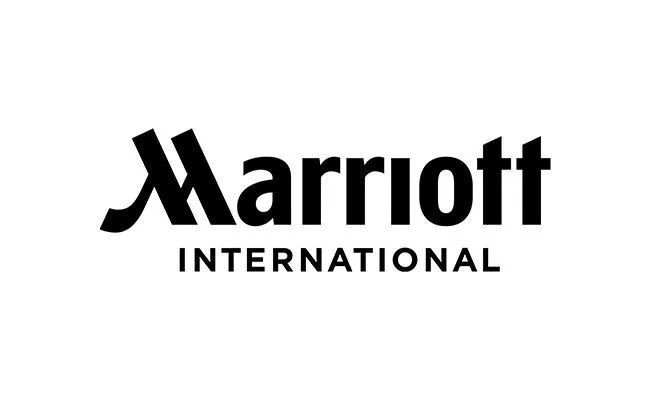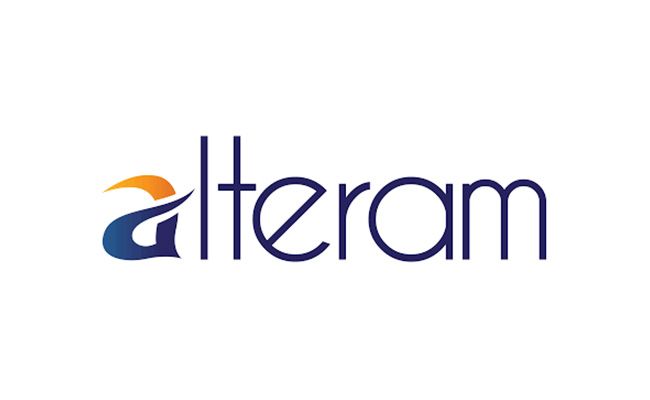DMG: Forecasting and Scheduling in the Digital Era
- Introduction to Contact Center Management
- What Is Vendor Complexity in Contact Centers?
- Understanding Contact Center Challenges
- Why Reducing Vendor Complexity Matters
- Common Causes of Vendor Complexity
- Key Areas to Consolidate
- Selecting the Right Vendor for Your Contact Center
- Assessing Vendor Capabilities and Security
- Steps to Reduce Vendor Complexity
- Enhancing Agent Performance and Customer Satisfaction
- Risks of Maintaining Vendor Sprawl
- Metrics to Track as You Simplify
- Future Trends in Vendor Simplification
- Conclusion
Introduction to Contact Center Management
Contact center management is a crucial aspect of any business, playing a vital role in shaping the customer experience and driving business success. Effective contact center management involves overseeing daily operations, managing staff, processes, technology, and strategies to optimize performance and meet business goals. With the increasing importance of customer satisfaction, contact centers must provide excellent customer service, ensure efficient operations, and leverage technology to enhance both the customer and agent experience.Key aspects of contact center management include:Workforce Management: Ensuring that the right number of agents with the right skills are available at the right times to handle customer interactions efficiently.
Contact Center Technology: Utilizing advanced tools and platforms to streamline operations, improve communication channels, and provide agents with the resources they need to perform their tasks effectively.
Customer Expectations: Continuously evolving to meet and exceed customer expectations by offering seamless, personalized, and efficient service across all touchpoints.
What Is Vendor Complexity in Contact Centers?
Vendor complexity refers to the operational and technological burden caused by using multiple, disconnected third-party solutions to run core contact center functions. Each vendor typically provides a point solution for a specific area—such as routing, analytics, workforce engagement, or AI—but without seamless interoperability, this results in a disjointed technology environment.In practice, vendor complexity leads to:Overlapping tools with redundant capabilities
High integration and maintenance costs
Conflicting user interfaces and learning curves
Inconsistent reporting and KPIs
Security vulnerabilities due to fragmented controls
Understanding Contact Center Challenges
Contact centers face numerous challenges, including high turnover rates, reducing wait times, and meeting ever-evolving customer expectations. To address these challenges, contact centers must implement efficient operations, provide self-service options, and leverage artificial intelligence to streamline processes.Why Reducing Vendor Complexity Matters
1. Operational Efficiency
With fewer systems:Agents use one unified interface instead of juggling multiple apps, ensuring interactions in one channel align with others.
IT teams manage fewer APIs, upgrades, and version control issues.
Supervisors can monitor performance from a single source of truth.
2. Cost Optimization
Every vendor brings licensing fees, support contracts, and integration work. In many cases, 15%–30% of the contact center budget is spent maintaining systems that overlap in functionality.Key areas of savings include:Lower software licensing costs
Fewer integration and maintenance resources
Reduced training and onboarding overhead
Elimination of shadow IT expenses
3. Unified Data and Decision Making
Disparate systems create silos:Interaction data sits in one platform
Workforce KPIs are tracked in another
AI insights are locked in bot tools
4. Improved Customer Experience
Disjointed tech ecosystems lead to:Inconsistent customer handoffs across channels
Repetitive identity verification or issue summaries
Slower first-contact resolution, impacting the customer's experience
5. Faster Innovation and Agility
Vendor complexity slows digital transformation:New channels take months to deploy
Feature updates break integrations
AI deployment requires extensive rework, especially in managing complex interactions
Common Causes of Vendor Complexity
1. Inherited Systems from Mergers and Acquisitions
As companies grow through M&A, they inherit legacy systems—often incompatible with current infrastructure. These remain in place to avoid disruption, but add to the tech debt.2. Departmental Silos and Shadow IT
Procurement often happens in silos. Marketing might adopt a survey tool, while operations brings in a separate QA vendor—without cross-functional alignment of digital interactions. This results in platform overlap and governance issues.3. Point Solutions to Solve Immediate Problems
In the absence of a long-term CX strategy, contact centers frequently adopt niche tools to fix specific pain points (e.g., a chatbot to reduce call volume). Over time, these patchwork solutions create integration bottlenecks.4. Lack of Integration Standards
Without a defined architecture—such as microservices, open APIs, or middleware—each new system adds complexity. Data cannot move fluidly, and every new integration is custom-coded and brittle.Key Areas to Consolidate
Selecting the Right Vendor for Your Contact Center
Selecting the right vendor for your contact center is a critical decision that can significantly impact customer satisfaction, operational efficiency, and business success. When evaluating vendors, businesses should consider several key factors:Experience and Capabilities: Assess the vendor’s track record and ability to deliver high-quality contact center software that meets your specific needs.
Innovation and Flexibility: Look for vendors that are committed to innovation and offer flexible solutions that can adapt to your evolving business requirements.
Implementation and Support: Ensure the vendor provides a smooth transition framework and ongoing support to minimize disruptions during implementation.
Assessing Vendor Capabilities and Security
When assessing vendor capabilities and security, businesses should evaluate the vendor’s ability to provide a secure and reliable contact center solution. This includes ensuring that the vendor’s technology is compliant with industry standards, has robust security protocols, and provides easy access to customer data.Steps to Reduce Vendor Complexity
1. Conduct a Technology Audit
Catalog all platforms by:Function and business owner
Monthly/annual cost
API and integration status
Usage frequency and user satisfaction
Renewal timelines
Performance reviews
2. Map Functional Overlaps and Gaps
Create a matrix of overlapping tools. Determine where consolidation can deliver:Feature parity or enhancement
Lower cost
Easier maintenance
Better management of peak times
3. Choose a Strategic CX Platform Partner
Prioritize vendors who:Offer modular architecture with broad native functionality
Use open APIs for third-party compatibility
Provide centralized analytics and security controls
Offer a marketplace of pre-integrated apps
Provide more self service options for both customers and contact center agents
4. Streamline Procurement and Governance
Centralize CX tech purchasing under a shared governance model
Create a steering committee with representatives from IT, operations, CX, and compliance
Develop a vendor scorecard that includes interoperability, support, and ROI
5. Execute in Phases
Start with a high-impact domain (e.g., routing, analytics)
Migrate to the unified platform
Sunset redundant systems with minimal disruption
Train human agents and supervisors on new workflows to ensure a seamless transition and maintain customer satisfaction
Monitor adoption and iterate as needed
Enhancing Agent Performance and Customer Satisfaction
Enhancing agent performance and customer satisfaction is critical to driving business success in contact centers. To achieve this, businesses should provide agents with the tools and training they need to deliver excellent customer service.Risks of Maintaining Vendor Sprawl
Integration failure leading to data loss or customer service disruption
Shadow IT exposure through unsanctioned apps
Data governance gaps with inconsistent access controls
Slower compliance audits due to fragmented data storage
Low agent satisfaction from switching between tools mid-interaction, impacting contact center agents who struggle with high contact volumes and the need for specialized knowledge
CX inconsistency caused by lack of shared customer context across channels
Metrics to Track as You Simplify
Future Trends in Vendor Simplification
1. AI Unification
LLM-powered platforms will blend chatbots, search, analytics, and real-time guidance into a single AI layer that spans voice, digital, and back-office workflows to meet customer expectations.2. Composable Architecture with Low-Code Tools
Vendors will deliver composable CX platforms where businesses can drag-and-drop capabilities (e.g., voice routing, IVR, survey logic) without needing separate vendors. These tools will enable businesses to serve more customers efficiently by streamlining processes and reducing the need for repeated interactions.3. API-Driven Vendor Marketplaces
Contact centers will increasingly adopt platforms that offer plug-and-play integrations through secure marketplaces, ensuring compatibility without heavy IT lift. These marketplaces are crucial in facilitating smoother interactions by addressing language barriers and improving communication with a diverse customer base.4. CX Operating Systems
The rise of centralized CX operating environments will consolidate WEM, analytics, routing, and AI—serving as the digital “control tower” for all interactions. Integrating effective knowledge bases within these systems is essential for enhancing customer service efficiency and personalization, leading to better agent responses and increased customer satisfaction.5. Vendor Consolidation in the Market
Expect to see M&A activity as niche vendors are absorbed into larger ecosystem players, further simplifying choices for buyers seeking unified stacks. WFM software plays a crucial role in this vendor consolidation by offering comprehensive workforce management tools that optimize scheduling, staffing, and operational efficiency.Conclusion
Vendor complexity in contact centers isn’t just a nuisance—it’s a strategic liability. Every disconnected system slows down agents, creates risk, and fragments the customer experience. But reducing vendor sprawl is not just about cutting costs—it’s about building an intelligent, scalable foundation that allows you to grow, adapt, and lead in a fast-changing CX landscape.By consolidating into unified platforms and streamlining your vendor stack, you’ll gain:Lower TCO and integration overhead
Faster innovation with fewer blockers
Higher customer satisfaction from seamless experiences
Greater agility to evolve with AI, compliance, and channel trends
Up to date agent skills through simplified training and onboarding









